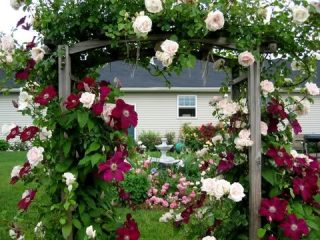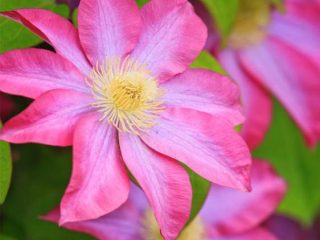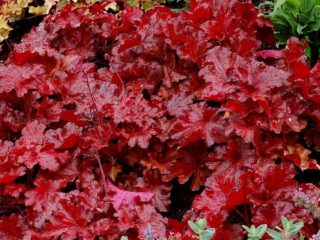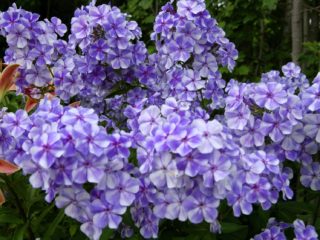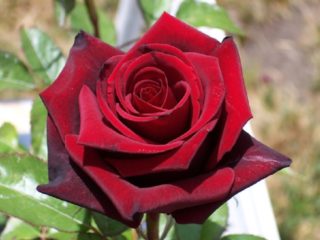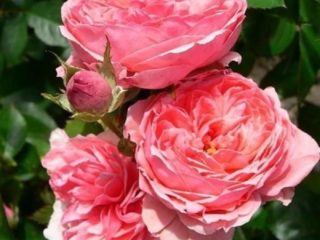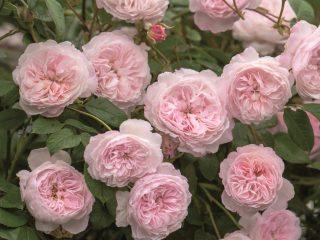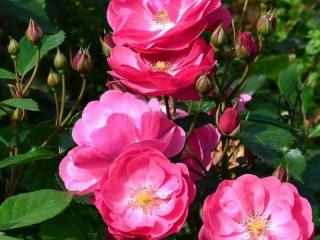Content
Most people believe that lilies and daylilies are two names for the same type of flower. But experienced gardeners know that these are different plants. Flower crops differ in appearance, structure and even origin. In order not to get confused in agricultural techniques, you need to know what the difference is between ornamental plants.
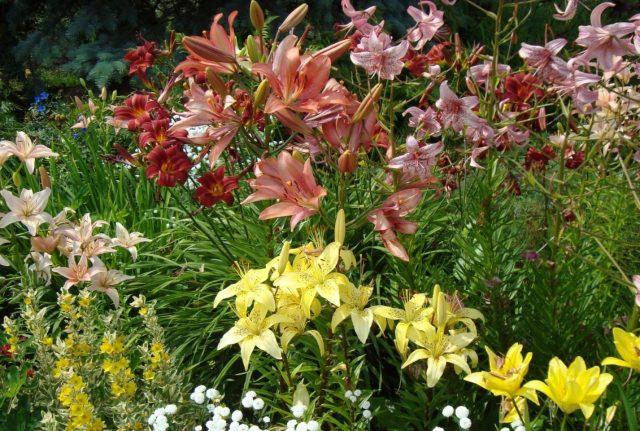
The difference can be seen in several ways, primarily in the structure of the flowers and the arrangement of the leaves.
Definitions
Lily and daylily are perennials belonging to the class of monocots. But in accordance with botanical systematization, they are considered representatives of different families. The first flower crop is included in the Liliaceae category, the second - Xanthorrhoeae. The type of plants also differs: lily is a bulbous plant, daylily is a rhizomatous plant.
What is the difference between a lily and a daylily?
The fact that lilies differ from daylilies can be seen even in the photo. There is a noticeable difference in the structure of the inflorescences, stems, leaves and root system.
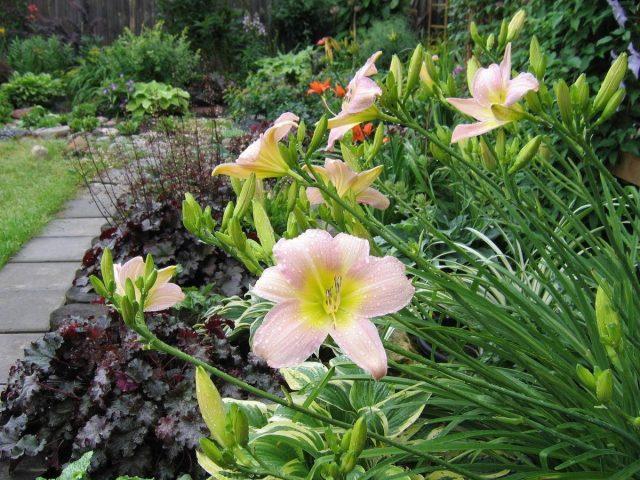
Accordingly, caring for representatives of each family has its own characteristics.
Origin
The first mentions of lilies are found in historical documents dating back to the 2nd century BC. Currently, the Liliaceae family has more than 110 main species, which are distributed throughout Europe. The plant is also found in Asia and North America, but on a smaller scale.
Daylilies are common in Southeast Asia. Some species grow in the southern regions of Siberia. The first hybrid flower was created in 1893 by J. Yeld. More than a century ago, two wild species were crossed: red and yellow. Currently, more than 40 thousand varieties of ornamental crops have been registered, differing in color, flower shape, petal structure, etc.
Titles
The derivative of the name lily is the Greek word leirion (leirion) - white. For many peoples, the flower is considered a symbol of purity. The botanical name of the lily genus Hemerocallis comes from the merger of two words hemera (hemera) - day and kallos (kalos) - beauty. The popular name of the flower is Krasnodev.
Root system
A lily develops from a bulb. At the point where the stem transitions into the last lower leaf, a bud is formed. It becomes a bulb from which a flower will grow next year.
Daylilies, unlike lilies, have a fibrous root system with thickenings (stolons). It is in the cord-like tubers of the plant that nutrients accumulate.
Leaves
The lily has a central fleshy stem with a bud at the top.The leaves are arranged in rings or in a spiral along the entire height of the peduncle. Daylilies have long narrow leaves that emerge in the form of a rosette from the surface of the ground; the stems of the plant are highly branched, but bare.
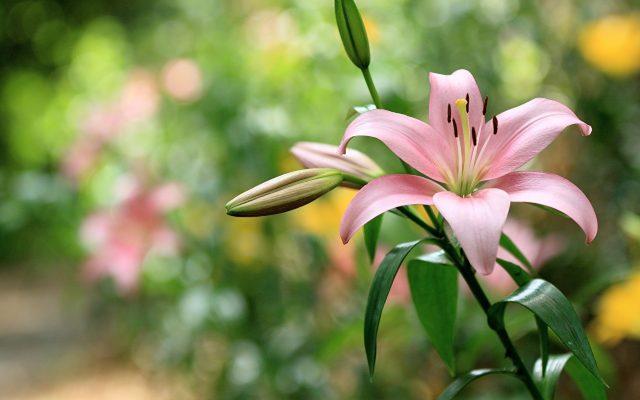
The lily has a strong single stem with large flowers at the top
Flowers
Lily buds have six petals and stamens. The shape of the flowers of the plant is varied and depends on the variety. The fruit is a three-locular capsule with flat seeds covered with a filmy skin.
On the thin petioles of the daylily are flowers with six petals arranged in two layers. The upper ones are true, the lower ones are sepals.

The fruit of the daylily is a triangular capsule with a small number of shiny, black seeds.
The flowers of varietal lilies are larger, emphatically decorative and fragrant. The colors of hybrid daylily varieties are very diverse, but the flowers have no aroma.
Height
Depending on the variety, the height of lily bushes ranges from 45 cm to 3 m. In contrast, the thin stems of daylilies, devoid of leaves, do not grow more than 120 cm.
Flowering time
The lily blooms for more than a week. At the beginning, the lower buds open, the rest bloom gradually, ending with the top ones.
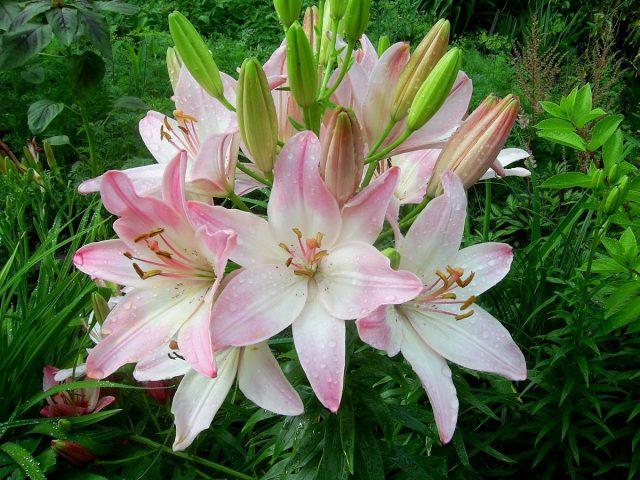
In total, the lily blooms for three weeks from July to August.
Each daylily flower lasts for 24 hours. The next day it fades, but other buds open. In general, flowering takes about a month. With proper selection of varieties, daylilies can delight the eye throughout the warm season, from May to September.
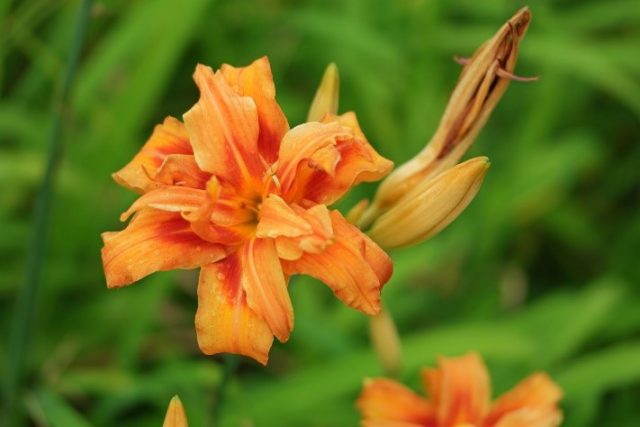
Daylilies are called ephemeral due to the ultra-short lifespan of the inflorescence.
Reproduction methods
Differences in plant propagation methods are mainly due to the fact that there is a fundamental difference in the structure of their root system. A lily develops from a bulb, so the flower culture spreads by dividing it, as well as by scales, ground children, buds (bulbs), cuttings (leaf and stem). Daylilies reproduce vegetatively (by dividing the bush), less often by seeds.
Features of cultivation
Cultivation of flowers similar in name and appearance has a number of features. Lilies are demanding in terms of care and environmental conditions, unlike the unpretentious daylilies. At the same time, gardeners highlight certain similarities in the agrotechnical methods used when growing two types of plants.
Lily bulbs are planted in open ground after the danger of frost on the soil has passed. Most flower varieties do well in illuminated areas. Partial shade is preferred by species with adventitious roots, for example, a group of curly lilies.
Site requirements:
- there should be no stagnant soil conditions, since swampiness is detrimental to flowers;
- Well-fertilized soils are suitable, and the best fertilizing is humus, applied at the rate of 7 kg per 1 m2;
- slightly alkaline or neutral soils are preferable;
- To add looseness to the soil, it is advisable to add wood ash and sand.
When planting, the lily bulb is carefully placed in the prepared hole, the roots are straightened, and covered with earth. The soil is lightly compacted, watered with settled water and the area is marked with a peg. At the end, the area planted with bulbs is mulched with crushed bark.
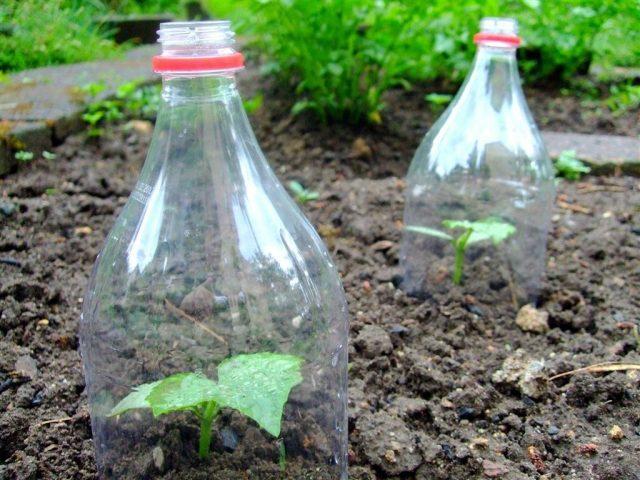
To protect lily seedlings from drying out, you can use plastic bottles with cut out bottoms
Caring for a capricious beauty includes:
- Feeding with complex fertilizers throughout the season.
- Timely (but not excessive) watering.
- Mulching the soil with straw and grass clippings.
- Tie the stems to supports as they grow.
- Removing faded inflorescences to maintain a decorative appearance.
At the end of the growing season, the lily stems are cut off to prevent cold from passing through them to the bulbs. For the winter, the flower beds are covered with pine paws, sawdust or leaf soil.
Caring for daylilies is much easier; it’s not for nothing that they are called lilies for the lazy. Flowers grow well in any garden soil, without experiencing discomfort either in bright sun or in subdued shade. Perennials grow well in neutral and slightly acidic soil.
Daylilies are able to grow on depleted soils, but the best decorative qualities of the plant are manifested on loose loams with rich organic matter. A flowering crop easily tolerates a lack of moisture, but excess water negatively affects the condition of the plantings. Practical tips for cultivating daylilies and lilies in your garden are presented in the video:
Frost resistance
Most varieties of lilies in European countries and partly in Russia are cultivated outdoors. But it is important to know that if a flower crop can withstand the winter when grown in a milder climate, then in the temperate zone it must be carefully covered during cold weather. But even here there are some nuances. Thus, the Ordinary White variety tolerates frosts provided that a thick snow cover is formed. The tiger lily can withstand the cold Russian winter without any problems.
In spring, daylilies have an early start to the growing season - from the time positive night temperatures become established. In a temperate climate, characteristic of a large part of Russia, by the time autumn arrives, the plant does not have time to completely finish its growing season. As a result of the first frost, the leaves die. When choosing daylilies, it is advisable to give preference to winter-hardy varieties with early and medium flowering periods.
Photos in landscape design
Due to their exquisite appearance, lilies take second place after roses in beauty in the ranking of flowers. Experienced gardeners advise planting an ornamental plant to be taken seriously, having thought through the details of placement. Landscape groups consisting of 5-8 specimens of lilies look especially attractive.
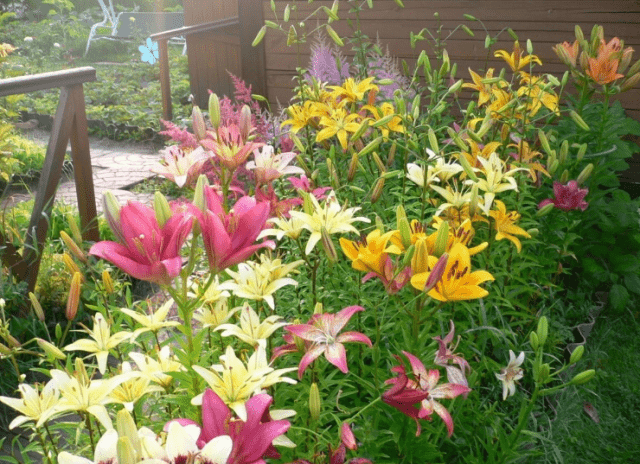
When landscaping a local garden area, it is advisable to select varieties of lilies that gradually replace each other in flowering
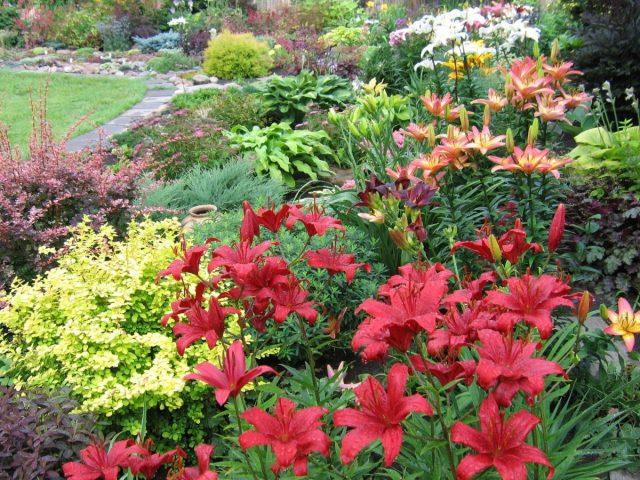
An excellent solution is to plant a group of lilies of different colors, thus preventing cross-pollination
Daylilies are the best way to decorate a garden or local area. Light flowers are usually planted in the sun, and bright ones in partial shade to prevent natural fading of the petals. All types of daylilies look great, both in single plantings and in combination with other plants. Tall flowers are placed in the form of borders near the walls of buildings, along paths. Daylilies with straight stems, planted along the edge of an artificial pond, form an expressive coastline.
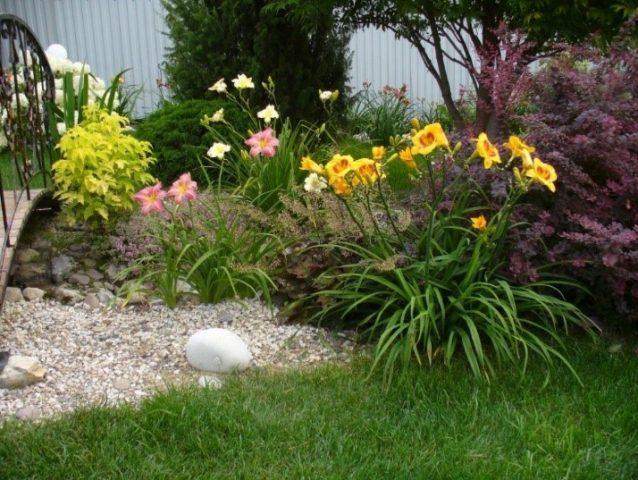
Low- and medium-growing varieties of daylilies can be used to decorate rockeries or alpine slides
Luxurious lilies get along well with more modest daylilies. Two different types of plants form a harmonious combination due to the visual similarity of the inflorescences. In addition, despite the fact that the growing conditions and rules for caring for lilies and daylilies are different, there is a lot in common in agricultural technology.
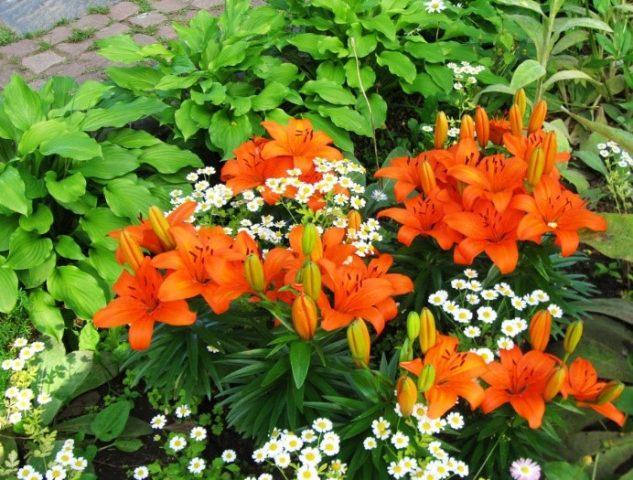
Low plants with small flowers look good next to tall lilies and daylilies.
Conclusion
Lilies and daylilies - plants with pronounced decorative qualities are popular among owners of personal plots and landscape designers. New varieties and hybrids of flower crops with a rich color palette and unique decorative qualities make it possible to create unusual garden compositions.
